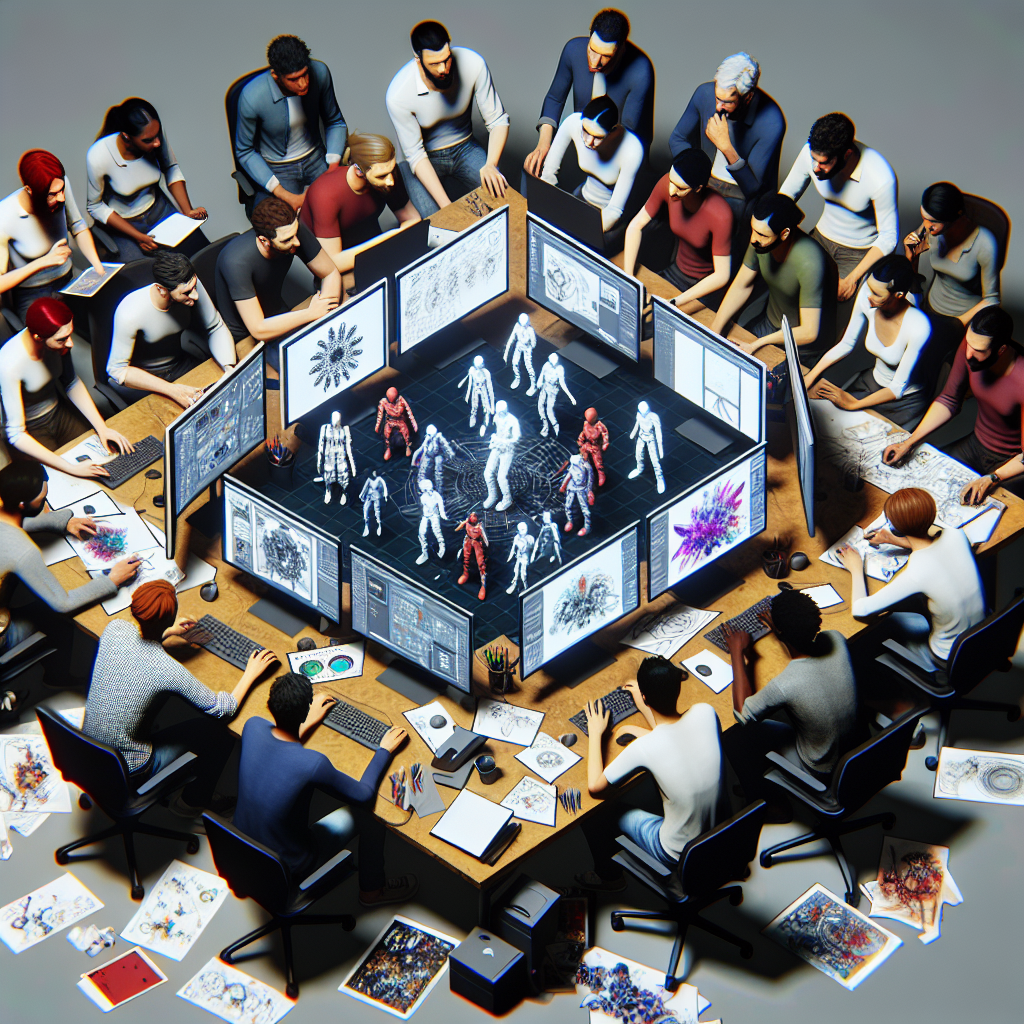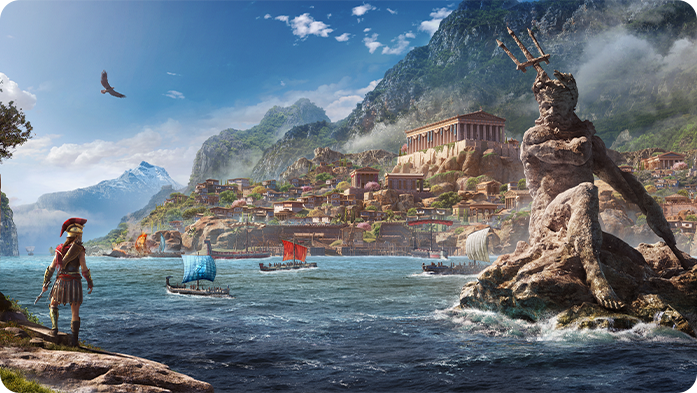Innovative Game Developments: Create Custom 2D and 3D Browser-Based Games on HTML5
Why Game Development on HTML5 is Revolutionizing the Gaming Industry

Have you ever paused to consider how game development on HTML5 has completely transformed the gaming landscape? Let’s dive into the captivating world of HTML5 and uncover why its reshaping the industry. With over 2.5 billion gamers worldwide, developers are racing towards innovative technology to keep players engaged. And guess what? HTML5 is at the forefront. ⭐
Seamless Cross-Platform Experience
One of HTML5s standout features is its ability to create games that run smoothly on any device—be it a desktop, tablet, or smartphone. This gives players the freedom to jump into their favorite games anytime, anywhere. For example, imagine youve just finished a meeting and want to unwind with a quick game on your phone. Thanks to development of HTML5 browser-based 2D games, you can seamlessly continue where you left off on your laptop without any hassle!
Cost-Effective Development
Did you know that building a game on HTML5 can often be more cost-effective than traditional game development? Creating a custom game in HTML5 can save development time and expenses. Unlike native apps that are platform-specific, HTML5 games are universal. That’s why more indie developers are turning their attention to this technology. For instance, a small gaming studio implemented HTML5 and reduced their costs by up to 30%! ⭐
Engaging and Interactive Gameplay
With features like responsive design and rich multimedia support, creating browser-based 3D games from scratch has never been easier or more exciting. Players today crave immersive experiences. And thanks to HTML5’s advanced capabilities, developers can create visually appealing games with stunning graphics and interactivity that keeps players coming back. Can you think of a game where the stunning backdrop and engaging gameplay pulled you in for hours? That’s the magic of HTML5!
Rapid Implementation of Features
HTML5 enables faster updates and feature integration. When market trends shift or player feedback calls for changes, developers can act swiftly. For instance, a renowned game developer added new gameplay features based on community feedback and managed to increase engagement significantly! This agility is crucial in the fast-paced gaming industry.
Access to a Vast Talent Pool
The demand for skilled developers who can harness the power of HTML5 is skyrocketing. With over 20 years of experience, our professional specialists at Zuniweb Studio are well-equipped to navigate this landscape. We provide all services in one place, so you dont need to juggle between multiple vendors. This means streamlined communication and a cohesive vision for your project! ⭐
Your Seamless Journey Begins Here
Are you ready to elevate your game development strategy? Reach out to us at Zuniweb Studio, where we specialize in development of 2D games for Windows and HTML5. Whether you want to develop something simple or a complex online game, weve got you covered! Dont miss out on your opportunity to join the revolution—call us at Go Telegram Chat or visit our website zuniweb.com today!
Real Client Stories
Take, for example, a recent client who came to us seeking to revamp their aging mobile game. They struggled with user engagement, and many players had drifted away. Our team utilized game development on HTML5 techniques to reconstruct their game, and within weeks, active users doubled, leading to a surge in revenue from in-game purchases!
Expert Advice from Our Specialists
Managing your IT infrastructure for gaming doesn’t have to be overwhelming. Regular software updates are vital. We recommend setting a quarterly schedule for technical check-ups to optimize performance. And always consider implementing robust security measures to protect your game from potential threats. Remember, keeping your game secure can prevent costly downtimes! ⭐
A Thriving Future Awaits You!
If the buzz around game development on HTML5 excites you, feel free to jump on board! Our team at Zuniweb Studio is committed to providing quality, tailored solutions to meet your needs. Ready to create a custom game that stands out? Contact us today!
Frequently Asked Questions
- What is HTML5 game development?
- HTML5 game development refers to creating games using HTML5, JavaScript, and CSS, which allows for compatibility across all devices and browsers.
- Why choose HTML5 for game development?
- HTML5 offers cross-platform compatibility, cost-effectiveness, and fast loading times, making it ideal for modern game development.
- Can I create a browser-based 3D game?
- Yes! Technologies like WebGL, often used in conjunction with HTML5, can help you create stunning browser-based 3D games.
- How does Zuniweb Studio ensure quality in game development?
- We employ experienced specialists, utilize advanced technologies, and follow best practices to ensure high-quality game development.
- What are the costs associated with game development?
- Costs can vary widely based on project complexity. For more specific pricing details, please contact us.
- How long does it take to develop a custom game?
- The timeline depends on the game’s complexity but typically ranges from a few weeks to several months.
- Will my game be compatible with mobile devices?
- Absolutely! Games developed with HTML5 are designed to work seamlessly across mobile devices.
- Can I update my game after launch?
- Yes! HTML5 games can be updated easily due to their online nature, allowing for rapid implementation of new features.
- Do you provide ongoing support for my game?
- Yes, we offer continuous support and maintenance to ensure your game runs smoothly.
- How can I start my project with Zuniweb Studio?
- Simply give us a call at Go Telegram Chat or visit zuniweb.com to discuss your project!
How to Create a Custom Game That Engages Players and Drives Revenue
contact us
Game apps can be really expensive to build and maintain, but don’t worry, we do everything in our mix to ensure that you get the best, for the best cost.

Have you ever wondered how some games capture and retain your attention while others fade into obscurity? The secret often lies in creating a custom game that not only engages players but also drives revenue. Let’s explore some key strategies to ensure your game stands out in a crowded market. ⭐
1. Understand Your Audience
The first step to crafting an engaging game is understanding who your players are. Conduct thorough market research to identify their interests and preferences. Are they casual gamers looking for quick entertainment, or hardcore players seeking complex challenges? For instance, a studio targeting teens might focus on vibrant graphics and social sharing capabilities, while one aimed at adults might emphasize strategy and in-depth storytelling. Knowing your audience helps you tailor the games mechanics and aesthetics to keep them hooked.
2. Focus on Unique Gameplay Mechanics
To create a custom game that stands out, you need innovative gameplay that keeps players coming back. Think about games like “Fortnite,” which made building popular, or “Pokémon GO,” which turned everyday locations into virtual adventures. These games engage players by offering experiences they cant find elsewhere. Don’t be afraid to experiment with new mechanics or even combine existing ones in novel ways! ⭐
Examples of Unique Mechanics:
- Combining puzzle-solving with RPG elements
- Integrating real-world locations like in AR gaming
- Providing user-generated content options to enhance replayability
3. Implement Reward Systems
Reward systems can significantly boost player engagement and increase in-game purchases. Consider incorporating achievements, loot boxes, or a progress ladder where players can unlock new capabilities as they advance. For example, a recent mobile game introduced daily challenges that rewarded players with exclusive items. This sparked increased engagement and revenue, with reports indicating a 25% uptick in purchases after the system was implemented! ⭐
4. Harness the Power of Storytelling
Good stories can captivate players like nothing else. Even in simple games, an engaging narrative can elevate the experience. Create characters with depth, meaningful conflicts, and relatable situations. Games that successfully integrate storytelling often see improved retention rates; players are more likely to keep playing to find out what happens next.
5. Utilize Quality Graphics and Sound Design
Visual and auditory appeal can make or break your game. Invest in high-quality graphics that reflect your game’s theme and atmosphere. Pair this with immersive sound design to enhance gameplay. For instance, imagine playing an action game without the heart-racing soundtrack—its just not the same! Users today have high expectations, so don’t cut corners here. ⭐
6. Test and Iterate
Once youve created your game, it’s vital to test it thoroughly. Gather feedback from beta testers and be open to making adjustments based on their experiences. This process can lead to better gameplay, fixing glitches, and ensuring your game resonates with the audience. The feedback loop is crucial for understanding what works and what doesn’t. A strong game is never truly finished; it evolves based on user interaction.
Your Path to Success Begins Now!
Creating a custom game that engages players and drives revenue is not just a dream; it’s entirely achievable with the right approach. At Zuniweb Studio, we leverage our extensive 20 years of experience in the industry to guide you through each step of the game development process, from concept to launch. Our professional specialists are passionate about bringing your vision to life! Ready to start your game development journey? Call us at Go Telegram Chat or visit our website at zuniweb.com to begin today! ⭐
Frequently Asked Questions
- What is a custom game?
- A custom game is designed specifically to cater to the unique goals and audience of a client, often including tailored gameplay mechanics and themes.
- Why is player engagement important?
- Higher player engagement translates to better retention rates and increased revenue from in-game purchases and ads.
- How can I monetize my game?
- Common monetization strategies include in-app purchases, advertisements, subscription models, and premium pricing.
- What platforms can I develop games for?
- You can develop games for various platforms, including web browsers, mobile devices, and desktop applications.
- How long does it take to develop a custom game?
- The timeline can vary widely based on the complexity of the game; its best to consult with a development team for a customized estimate.
- What role does storytelling play in games?
- Storytelling enhances player immersion, making the gameplay more engaging and encouraging players to invest time in the game.
- What tools do developers use for game creation?
- Developers often use game engines like Unity or Unreal Engine and programming languages such as C# or JavaScript.
- Can I update my game post-launch?
- Yes, games can be updated and improved based on player feedback and evolving market trends.
- Why is testing important in game development?
- Testing helps identify bugs and ensures the game runs smoothly, significantly enhancing player experience.
- How can I start my game project with Zuniweb Studio?
- Contact us at Go Telegram Chat or visit zuniweb.com to discuss your game idea!
The Ultimate Guide to the Development of HTML5 Browser-Based 2D Games: Trends and Best Practices
contact us
Game apps can be really expensive to build and maintain, but don’t worry, we do everything in our mix to ensure that you get the best, for the best cost.

Are you excited about diving into the dynamic world of HTML5 browser-based 2D games? With the rapid evolution of technology, now is the perfect time to explore current trends and best practices that can help you create exciting, engaging games. Whether youre a seasoned game developer or a budding enthusiast, this guide will take you through essential concepts that drive success. ⭐
1. Understanding HTML5 and Its Benefits
HTML5 has emerged as the go-to technology for developing browser-based games. Its seamless integration of multimedia content, improved graphics, and device compatibility makes it an ideal choice. Here are some key benefits:
- Cross-Platform Compatibility: Players can access your games on desktops, tablets, and smartphones without needing installation.
- Rich Multimedia Support: HTML5 supports audio, video, and complex animations, allowing developers to create immersive experiences.
- SEO Friendly: Unlike traditional downloadable games, HTML5 games can be indexed by search engines, enhancing discoverability.
2. Current Trends in HTML5 Game Development
Staying updated on trends is crucial in the gaming industry. Here are some key trends influencing the development of HTML5 browser-based 2D games today:
- Casual and Hyper-Casual Games: These games target a wide audience and can be played in short bursts. Their simplicity and instant accessibility attract players quickly.
- Social Integration: Integrating social features, such as sharing achievements and inviting friends, boosts player engagement. Games like “Clash of Clans” thrive on social interaction.
- Procedural Content Generation: By using algorithms to create unique game elements, developers keep gameplay fresh and engaging, encouraging players to return.
- Adoption of Gamification: Incorporating game-like elements in non-game contexts keeps users engaged and encourages specific behaviors, such as learning or fitness.
3. Best Practices for Development
Now that you’re aware of the trends, let’s explore best practices to ensure your game is a hit:
A. Start with a Strong Concept
The foundation of a great game begins with a solid concept. Spend time brainstorming ideas, and focus on what makes your game unique. Ask yourself questions like: What kind of gameplay will keep players engaged? How can I incorporate story elements? ⭐
B. Optimize for Performance
Performance issues can lead to frustrated players. Ensure your game runs smoothly on various devices by optimizing images and code. Techniques like lazy loading for graphics and sound can help maintain performance without sacrificing quality.
C. Prioritize User Experience
Design your game with the player in mind. Ensure intuitive controls and a clear interface. Regular playtests can provide valuable feedback on user experience. A well-designed game feels seamless and effortless to play.
D. Utilize Analytics
Data-driven development is crucial for understanding player behavior. Implement analytics tools to track player engagement, in-game purchases, and dropout rates. This information can inform your update strategy and help retain users long-term. ⭐
4. Testing and Iteration
No game is perfect on the first try. Utilize both alpha and beta testing stages to gather player feedback. Focus on:
- Bug Reporting: Encourage players to report bugs and glitches. This collaborative effort will help identify and fix issues quickly.
- Player Feedback: Ask testers for suggestions on gameplay, mechanics, and user experience to ensure your game meets audience expectations.
5. Marketing Your Game
Congratulations! Your game is complete. Now, you need players. Implement effective marketing strategies tailored to your target audience:
- Social Media Promotion: Leverage platforms like Facebook and Instagram to showcase gameplay videos and sneak peeks.
- Influencer Partnerships: Collaborate with gaming influencers to tap into their audience and gain credibility.
- SEO and Content Marketing: Optimize your game’s landing page so it can easily be found through search engines.
Embark on Your Game Development Journey!
Creating HTML5 browser-based 2D games can be incredibly rewarding. By following these trends and best practices, you can develop engaging games that resonate with players and drive revenue. At Zuniweb Studio, we have over 20 years of experience and a passionate team of professional specialists ready to help bring your game to life! Don’t hesitate to reach out. Call us at Go Telegram Chat or visit us at zuniweb.com to discuss your project today! ⭐
Frequently Asked Questions
- What are HTML5 browser-based games?
- HTML5 browser-based games are games that run in web browsers using HTML5, JavaScript, and CSS, allowing for seamless cross-platform compatibility.
- Why are HTML5 games becoming popular?
- They are accessible, easy to share, and often free to play, making them appealing to a wide range of players.
- Can I monetize HTML5 games?
- Yes! You can monetize through in-game purchases, advertisements, or premium versions of the game.
- How long does it take to develop an HTML5 game?
- The development time can vary based on the complexity of the game; simple games may take weeks, while more complex ones could take months.
- What tools are available for HTML5 game development?
- Popular tools include game engines like Phaser, Unity (with WebGL output), and Construct 3, which simplify the development process.
- How can I test my HTML5 game?
- Use beta testing tools, gather feedback from players, and analyze gameplay metrics to fine-tune your game before launch.
- What should I consider in terms of game design?
- Focus on user experience, gameplay mechanics, and visual/audio appeal, along with accessibility for a wider audience.
- Is it important to include social features in games?
- Absolutely! Social features can enhance engagement and create a community around your game, encouraging players to return.
- Can HTML5 games be played offline?
- Generally, HTML5 games require an internet connection; however, implementing service workers can allow for offline play for some features.
- How can I start developing my own HTML5 game?
- Begin by learning the basics of HTML5 and JavaScript, and practice with existing game engines or online courses to build your skills.
What It Takes to Master the Development of 2D Games for Windows and HTML5: A Step-by-Step Journey
contact us
Game apps can be really expensive to build and maintain, but don’t worry, we do everything in our mix to ensure that you get the best, for the best cost.

Are you ready to embark on a thrilling journey into the world of 2D game development for Windows and HTML5? This guide will walk you through the essential steps needed to master this craft. Whether you’re aiming to create a casual game or a gripping narrative experience, each phase of this journey is crucial to your success. Let’s dive in! ⭐️
Step 1: Understanding Game Development Basics
Before you start coding, it’s essential to grasp the fundamentals of game development. This includes basic concepts such as:
- Game Mechanics: Understand how gameplay elements interact. Mechanics determine how players engage with your game.
- Game Design Principles: Learn about balance, pacing, and the importance of player feedback, which keeps players engaged.
- Storytelling: Strong narratives can elevate your game’s appeal. Think about how the story integrates with gameplay.
Step 2: Choose the Right Tools
Selecting the appropriate tools for development is crucial for success. Popular options for development of 2D games for Windows and HTML5 include:
- Unity: Known for its versatility, Unity supports both 2D and 3D gameplay and offers extensive asset support.
- Construct 3: A great choice for beginners, it uses a visual scripting language, making it easy to create complex games without extensive coding knowledge.
- Phaser: An excellent HTML5 framework specifically designed for building 2D games. It’s perfect for those focused on web browser deployment.
Step 3: Prototype Your Game
Once you’ve decided on your tools, start prototyping your game. A prototype doesn’t have to look pretty; its primary purpose is to test gameplay mechanics. Focus on:
- Creating a playable version of your game concept that showcases core mechanics.
- Testing different gameplay features and getting early feedback from friends or potential players.
- Iterating on the prototype based on feedback and your own observations, refining the gameplay experience.
Step 4: Design Art and Audio Assets
Visual and auditory elements significantly impact player experience. Whether you’re designing assets yourself or using pre-made ones, prioritize quality and consistency:
- Art Style: Consistency in style keeps players immersed. Decide on a color palette and visual themes early on.
- Sound Design: Quality sound effects and music can enhance gameplay. Consider hiring a composer or using royalty-free assets if youre not skilled in audio design.
Step 5: Code Your Game
Now comes the fun part—coding your game! Here are some important aspects to consider:
- Game Engines: Leverage the built-in features of your selected game engine to save time and focus on gameplay logic.
- Version Control: Use version control systems like Git to manage your project’s iterations and collaborate effectively.
- Debugging: Incorporate debugging tools provided by the engine to identify and fix issues as they arise. A clean, functioning game is key!
Step 6: Playtesting and Feedback
Once your game is functional, it’s time to invite players to test it. Gather feedback by:
- Organizing playtesting sessions where players can interact with your game.
- Utilizing surveys and interviews to collect qualitative feedback on their experience.
- Taking notes on what players enjoyed and what areas need improvement. Be prepared to make adjustments based on their insights! ⭐
Step 7: Launch Your Game
After thorough testing and revisions, launch your game! Ensure you have a solid marketing plan in place:
- Build an Online Presence: Leverage social media and gaming communities to generate buzz about your game release.
- SEO Optimization: Optimize your game’s landing page for search engines to drive organic traffic.
- Launch Promotions: Consider offering limited-time promotions or discounts to encourage players to download or play your game upon launch.
Step 8: Continuous Improvement
Game development doesn’t end with the launch. Engage with your player community and monitor how your game performs:
- Gather Analytics: Use tools to analyze player behavior and engagement metrics. This data informs future updates and helps improve player retention.
- Regular Updates: Keep players engaged by introducing new features, content, or events regularly.
Your Journey Begins with Zuniweb Studio!
Ready to dive into the exciting world of 2D game development for Windows and HTML5? At Zuniweb Studio, we bring over 20 years of experience and a dedicated team of professional specialists ready to help you at every step of the way. Whether you’re just starting or looking to elevate your game, we’re here to guide you! Contact us at Go Telegram Chat or visit our website zuniweb.com today to make your game development dreams a reality! ⭐
Frequently Asked Questions
- What skills do I need to develop a 2D game?
- You’ll need a basic understanding of programming, game design principles, and some familiarity with art and sound design.
- How long does it take to create a 2D game?
- The timeline can vary widely based on complexity, but expect anywhere from a few months to over a year for a polished game.
- Can I publish my game on multiple platforms?
- Yes! HTML5 games are particularly well-suited for browser-based platforms, and many engines support cross-platform publishing.
- What are the best engines for developing 2D games?
- Unity, GameMaker Studio, and Construct 3 are popular choices among developers for 2D game creation.
- Should I focus on a story or gameplay first?
- While both are crucial, establishing core gameplay mechanics typically comes first, as they create the foundation for storytelling.
- How important is playtesting?
- Extremely important! Playtesting provides valuable insights into player experience and helps identify areas for improvement.
- What marketing strategies should I use for my game?
- Consider social media engagement, collaborations with influencers, and search engine optimization for your game’s website.
- Can I update my game after it’s launched?
- Definitely! Many developers regularly release updates based on player feedback and performance metrics.
- How do I choose the right art style for my game?
- Consider your game’s theme, target audience, and overall atmosphere. Look for inspiration from existing games and art styles.
- What should I do if I encounter technical issues during development?
- Utilize community forums, documentation, and online tutorials specific to your chosen game engine to resolve issues effectively.

Currently under development

Heroes Infinity: RPG + Strategy + Super Heroes
An epic action RPG packed with heroes, battles, and boundless adventure. Dive into the captivating world of Heroes of Infinity and embark on an unforgettable journey through cities and distant lands. Recruit powerful heroes, battle relentless enemies, and build your ultimate legendary team.
Experience seamless gameplay and captivating challenges. We blend smooth mechanics with dynamic pacing to ensure your adventure never slows down. Dive into an immersive world where every move matters — with rich visuals, responsive controls, and battles that push your strategy and skills.
RPG
mobile
strategy
Unity 3D